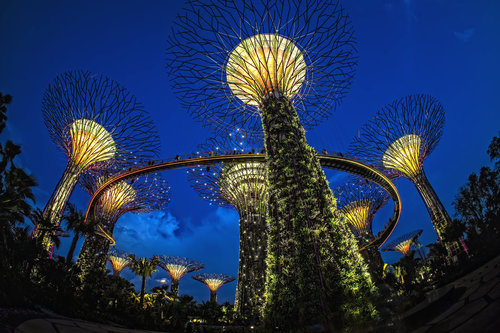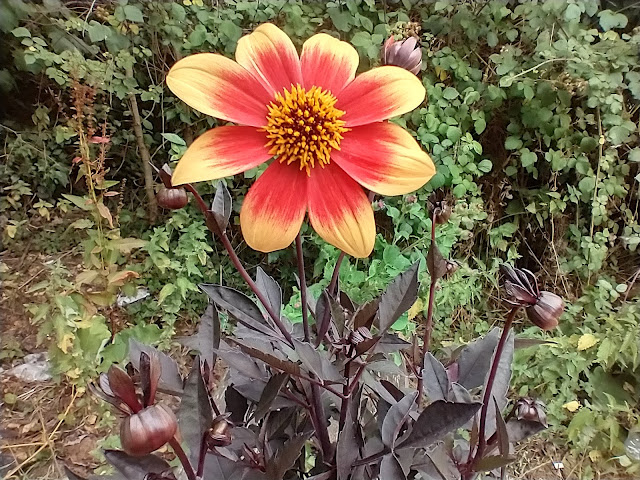OOTS: Where's Our Public Planting Legacy?
 |
| The Olympic Park last year, which is now called the Queen Elizabeth Olympic Park. Part of the northern parkland has now re-opened with the rest due to open in spring 2014 |
 |
| Roadsides got the "Olympic" treatment as well as the more frequently photographed pedestrian only areas |
Since my visit to the Olympic Park last year, I've been thinking about a different legacy; one concerning our public open space. Whilst there I heard "Look at those flowers!", many a time and then, "Wow, that's amazing!". I wandered around the Park with a huge grin, simply listening to everyone's incredulous reaction to their surroundings.
 |
| Green roofs and walls were also in abundance - this wall protected one of the transformer areas in the heart of the Olympic Park |
Back home, isn't that the kind of reaction we should all have to our own public space? Surely it's not just about the legacy embodied in the Olympic Park? Looking at Wikipedia and the Olympic Legacy websites, it seems that so far it is. Now, if the reaction I saw last year could be made nationally, wouldn't THAT be an Olympic legacy to be proud of?
 |
| A country scene? No, it's Castle Park in Bristol two weeks ago, right in the heart of the city |
Sadly it's an opportunity which has largely been missed. Sure, I've noticed an increase in Pictorial Meadows style roundabouts and suchlike locally, but there was much more than that on show at the Olympic Park. Besides, planting a Pictorial Meadow isn't the only answer. Thousands of trees plus tens of thousands of perennials also formed key components of the planting scheme in London.
 |
| Nigel Dunnett's RBC 'Blue Water Rooftop Garden' at RHS Chelsea 2013 |
Nigel's in much demand for talks and workshops about the Olympic Park, so hopefully his knowledge and experience is being passed on to those who can make this a reality in our public space. I thought immediately this kind of thing should be offered as a masterclass under the Britain in Bloom umbrella, but when I contacted the RHS, it isn't yet. Shame.
 |
| A vision of the re-styled athletes' Olympic village - presented by Delancy (the company converting the village into residential housing) at this year's RHS Chelsea. Much more shrubbery and an echo of the Pictorial Meadows via the Zantedeschia? |
Speaking to various nurserymen at Chelsea, they haven't seen much of an "Olympic effect", even amongst those who supplied the Games. A further thought was offered by Palmstead Nurseries last week (via email) which may help to explain why. They've raised an issue ahead of their workshop in September re whether the Building Research Establishment's BREEAM sustainability point system might limit the public planting palette too much. Perhaps this system was modified or not used for the Olympic Park's planting? It'll be interesting to see if and how it has changed when the Park fully reopens next year.
Another common issue raised whilst I've been researching this post is just how difficult it is for the public to effect change. Far too often Britain in Bloom and numerous other community schemes succeed through the sheer will and determination of a handful of people, often against the odds. Perhaps we've missed a golden opportunity to assess how and why the Olympic Park succeeded and then to modify e.g. planning laws so that 2012's success can be built into all our communities with far less hassle.
 |
| Gardens by the Bay, Singapore. Another public space with the wow factor, which was designed by the British architects Grant Associates Photo credit: Darren Chinn |
We all deserve the wow factor in our public spaces, wherever we may be. It improves our health and keeps the feel-good factor going. You may think that the above example is way too costly as it cost hundreds of millions of pounds. However, it's already close to covering its costs through increased tourism in Singapore and its far higher than predicted visitors. That's in less than two years since it opened. Good public space can be cost-effective :)
A final thought. There's been much concern lately about the future of horticulture in this country. Maybe if there were more places like the Olympic Park across the UK, perhaps we might not only inspire a generation to enjoy sport, but also inspire a new generation into horticulture too?*
* = or as NAH put it down the pub last night, "Inspire a germination" ;)










What a shame the olympic planting isn't to be repeated as an annual event, I had also hoped, like you, that more open spaces would be covered with annual flowers. Near us, Exmouth Town Council has planted up an area with annuals, just a small area, but what a difference that small sitting area on the sea front has made, everyone walking by was commenting on the flowers.
ReplyDeleteHi Pauline - I'm sure whatever will be there will be fabulous as the Park has a management plan in place covering the next few years.
DeleteI'm not just hoping for annual flowers - they can be the right plant, but not in the right place and for cash-strapped local authorities they can be costly to maintain. I went to a very interesting seminar a few years ago, which looked at how perennial planting can be used in public spaces. When the maintenance cost was mentioned. lots of people from local authorities suddenly sat up and took notice because the cost per metre was so much cheaper than their current regime.
I'm more of an advocate for great public planting for everyone.
Positive planting of open spaces would make a big impact in many ways. When Sheffield used wildflower meadow planting, they found that incidents of vandalism were reduced, as well as giving a 'feel good' factor, which is hard to formulate as hard evidence, but sooo important!
ReplyDeleteI thought Sheffield still had their Pictorial Meadows? Sheffield is an all-round masterclass for how good public planting can be. I must update my Public Planting page with links to what they've achieved there.
DeletePlanting does make such an impact on local lives and attitudes. We were in Singapore earlier this year and their approach is sometimes criticised that its all a bit "samey" or lacks imagination - Monty Don was not impressed in teh round the world in 80 gardens, butit is very green, large open spaces and lots of trees and other planting along the major roads.
ReplyDeleteIt sure does, Gaz!
DeleteI decided to mention the BREEAM question because I've seen and heard much criticism of our public planting over the years. 'Municipal' is the word often used. BREEAM is designed to help planners make sustainable choices and I do wonder if this is why the planting palette is so samey and possibly might be the source of that word usage. Remember what was said at Great Dixter about Cotoneaster horizontilis? It is a great plant and they used it well there, but it's certainly ubiquitous in the planting schemes around here!
My town and the surrounding villages used to take part in the country town/village in bloom which meant they looked spectacular. Unfortunately, with cuts in funding it's meant the competitions have gone, and so have many of the hanging baskets etc (probably health & safety got involved too). It's a shame, and the villages tend to be better than the town due to community spirit, but it's extremely hard to get people who aren't being paid to come out and plant together/tidy places.
ReplyDeleteHi EmmaT and welcome! Good point about budget cuts and whether people will volunteer. The budget for open spaces tends to be 1-2% (usually the former, the latter if lucky), so any cut to this budget will hurt deeply. Councils consider it to be an easy cut to make, yet the public when asked (in various surveys) rate Quality Open Space as the second highest service they value from their local councils. Only rubbish collection comes higher.
ReplyDelete